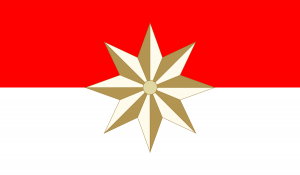Language/Sundanese/Vocabulary/Family
Hi Sundanese learners! 😊
In this lesson, we will learn about family in Sundanese culture. Family is a crucial part of Sundanese life, providing support and love for individuals throughout their lives. By the end of this lesson, you will know the basic Sundanese vocabulary for family members and you will gain some cultural insights about family in the Sundanese community. Ready? Let's get started!
Consider broadening your understanding by checking out these related lessons: Say Hello and Greetings in Sundanese, Colors & Clothes.
Importance of Family in Sundanese Culture[edit | edit source]
Family is highly valued in Sundanese culture. Family members play a significant role in each other's lives, providing support and love. In Sundanese society, extended family members often live close to each other and gather regularly for celebrations, such as weddings, funerals or religious ceremonies.
Families are crucial to Sundanese social identity, with strong family ties and obligations playing an important role in shaping the community. For example, Sundanese parents play a critical role in their children’s upbringing and education, with respect to Sundanese culture and traditions.
Basic Vocabulary[edit | edit source]
Let us now take a look at the basic vocabulary for family members in Sundanese.
| Sundanese | Pronunciation | English |
|---|---|---|
| Bapa | /bəpa/ | Father |
| Aya | /aja/ | Dad |
| Ibu | /ibu/ | Mother |
| Indung | /indʊŋ/ | Mom |
| Anjeun | /andʒɛn/ | You (singular) |
| Geni | /gɛni/ | Son |
| Budak lalaki | /bʊdak lalaki/ | Boy |
| Tilu | /tilu/ | Three |
| Dua | /dua/ | Two |
It’s important to note that Sundanese has a formal and informal register. For family members, Sundanese often uses the informal register. For example, a person might use “aya” (dad) instead of “bapa” (father).
Here is an example dialogue to help you understand these words in context:
- Person 1: Aya, ku urang barudak téh nyalira ka manéhna. (Dad, our children are looking for you.)
- Person 2: Ooh, ku anyar nyalira. (Oh, I am coming to them.)
Next, we will learn more about family relationships in Sundanese culture.
Family Relationships[edit | edit source]
Relationships are an essential part of Sundanese family culture. Family members are differentiated according to their position in the family tree.
Let's take a closer look:
- Ayah = Father (formal)
- Aya = Dad (informal)
- Ibu = Mother (formal)
- Indung = Mom (informal)
- Anjeun = You (singular)
- Saha = Sibling
- Adi = Younger Sibling
- Kakak = Older Sibling
- Bapa alit = Younger Uncle
- Bapa tiis or Bapa téh, = Middle Uncle
- Bapa engké or Bapa ayeuna = Oldest Uncle or Great Uncle
- Eyang = Grandparent (can be used for both grandfather and grandmother)
It is worth mentioning that Sundanese people often use kinship terms as a form of respect for elders. For example, even strangers will often use “Kakak” (older sibling) when referring to someone who is older than themselves.
Here's an example dialogue:
- Person 1: Kakak, anyar pamitan ka Eyang. (Older Sibling, I am going to say goodbye to Grandmother.)
- Person 2: Ok, eta aya téh datang sareng anjeun. (Ok, Dad will come with you.)
Interesting Facts[edit | edit source]
Did you know that in Sundanese culture, the term for extended family is “Kuring sahabat” which means "my friends"? The Sundanese people often consider their extended family members as close as their own ultimate friends.
Additionally, Sundanese family structure is highly matrilineal, with women often playing a significant role in family and community matters. It is noted that the Matriarch (female head of household) is highly respected for her contribution to Sundanese family culture.
Conclusion[edit | edit source]
In this lesson, we have learned about family in Sundanese culture. We explored the importance of family in Sundanese society along with Sundanese basic vocabulary for family members. We also learned about family relationships and interesting cultural facts associated. Remember, if you want to improve your Sundanese vocabulary or if you have any questions about Sundanese culture, you can check out the Polyglot Club website. Here, you can also find native speakers and ask them any questions. Hoping this lesson will help you understand Sundanese family culture better. 😊
➡ If you have any questions, please ask them in the comments section below.
➡ Feel free to edit this wiki page if you think it can be improved. 😎
Sources[edit | edit source]
Finished this lesson? Check out these related lessons: Days of the Week & Count to 10.

